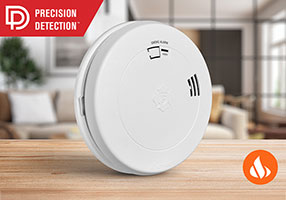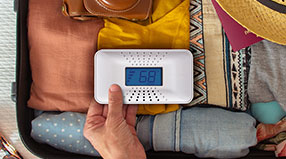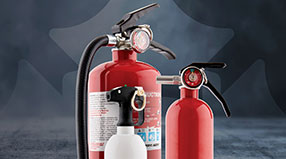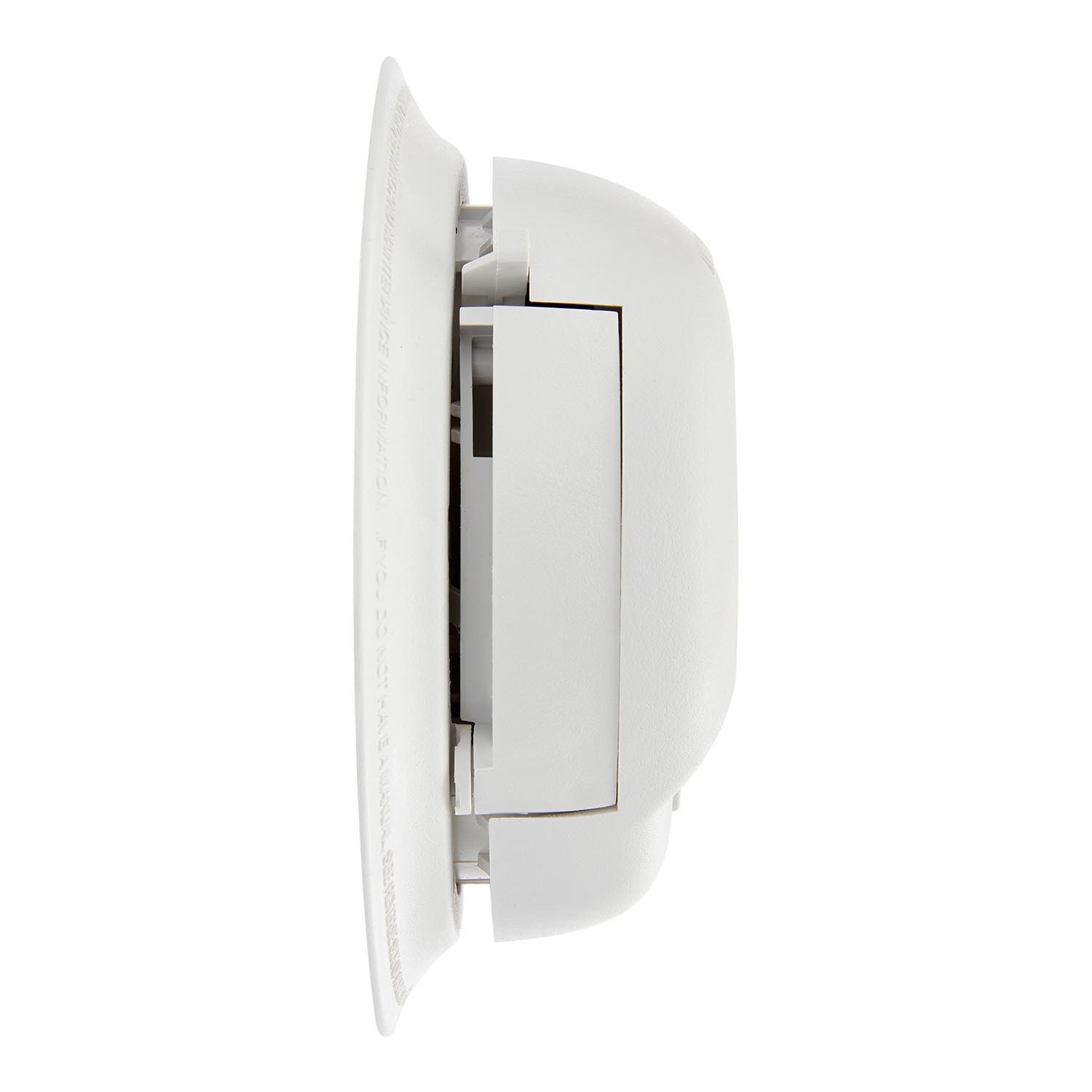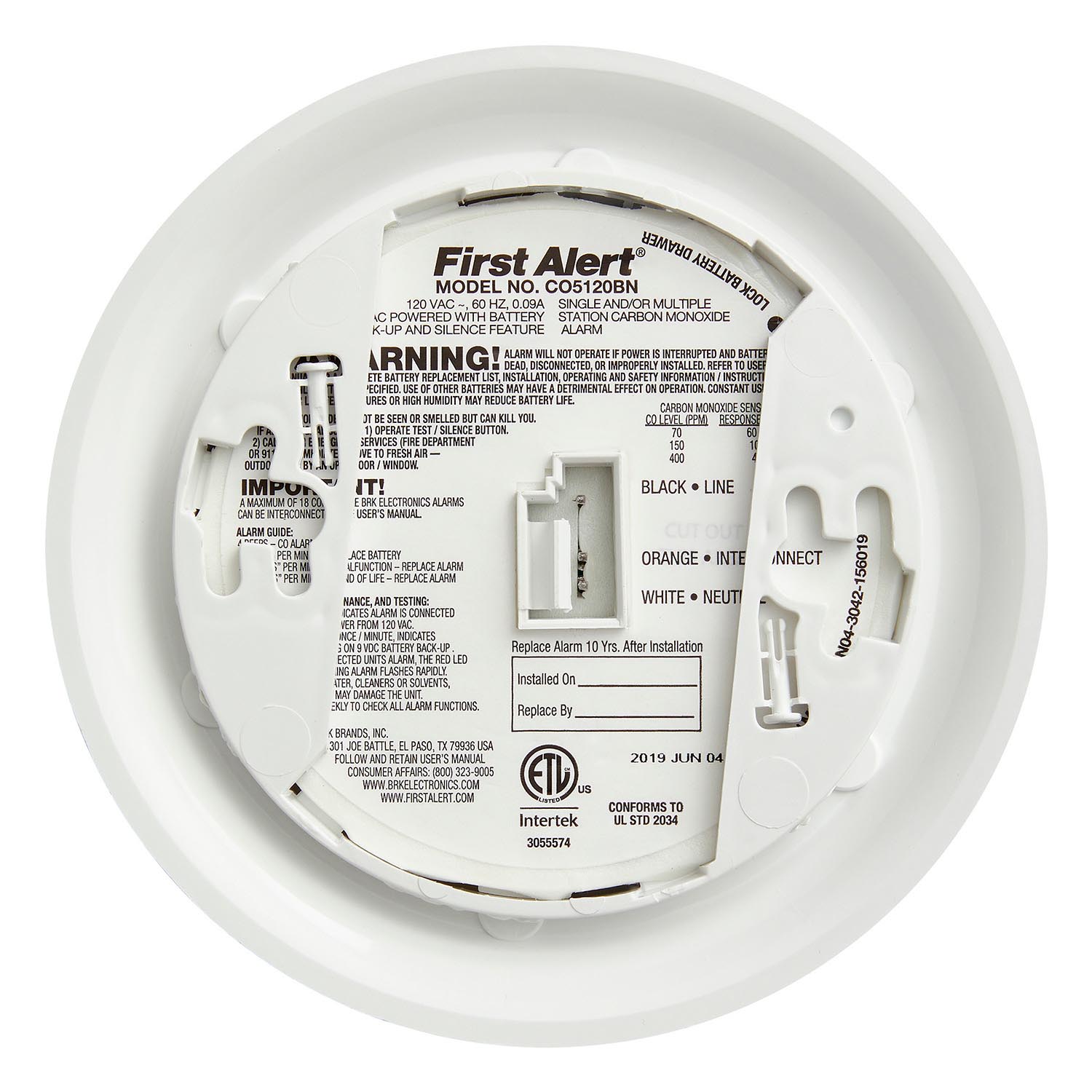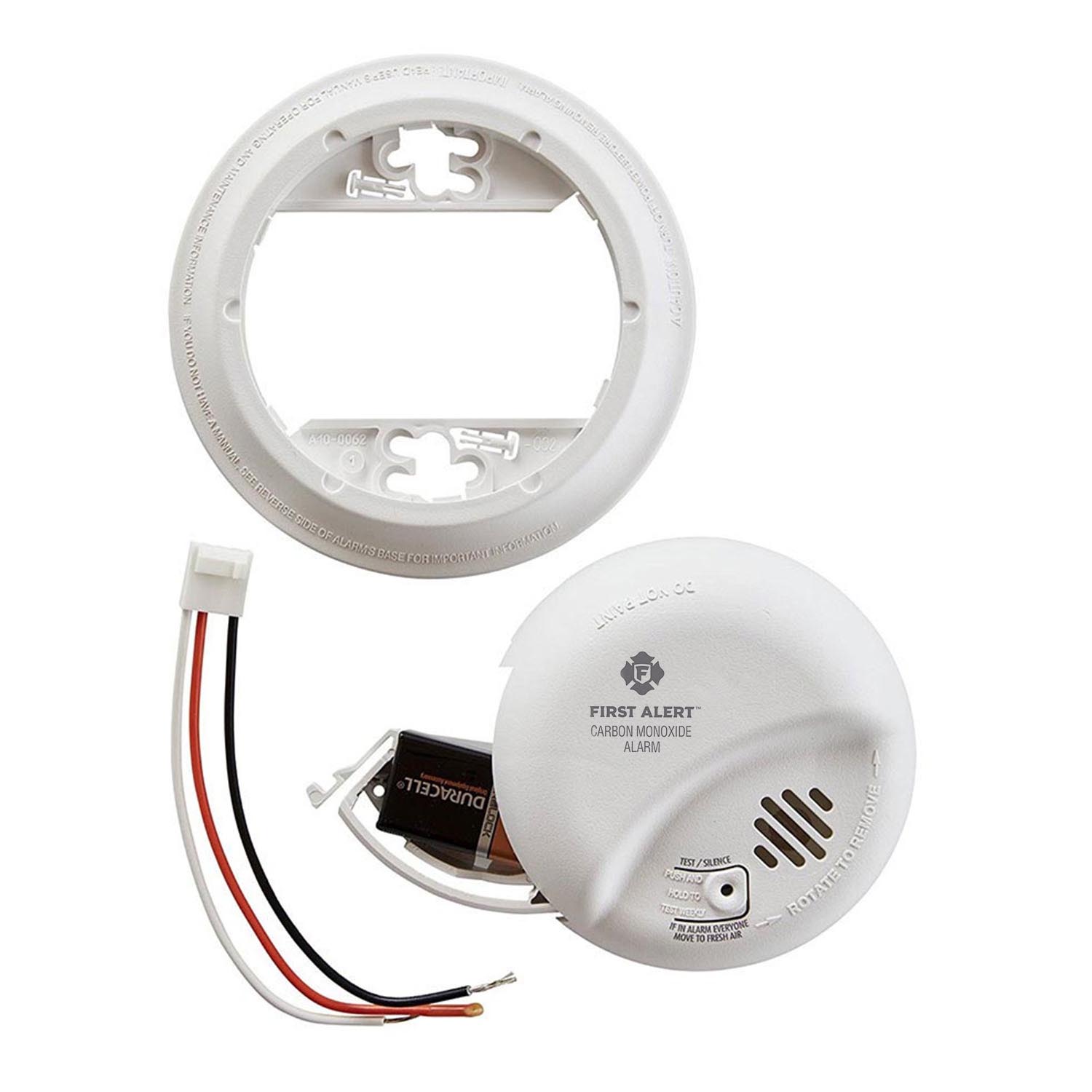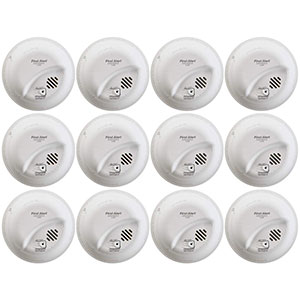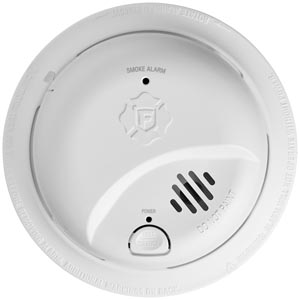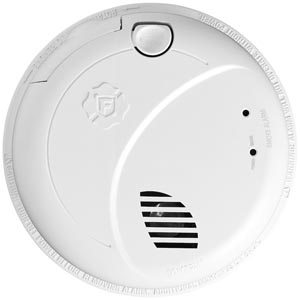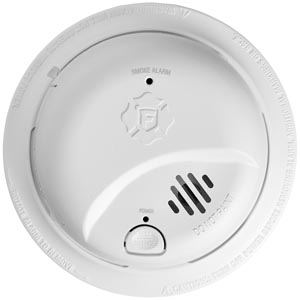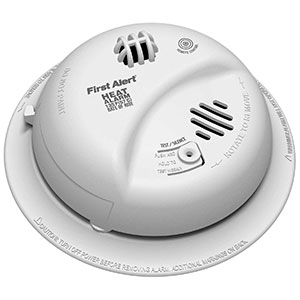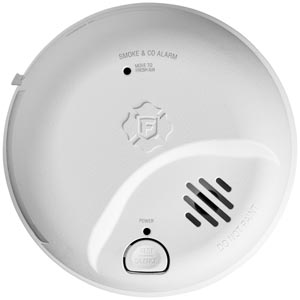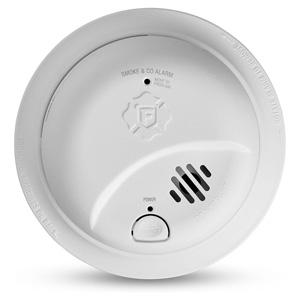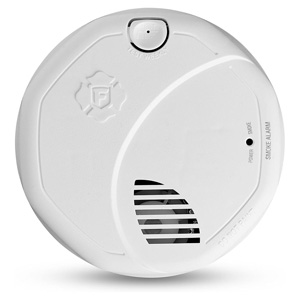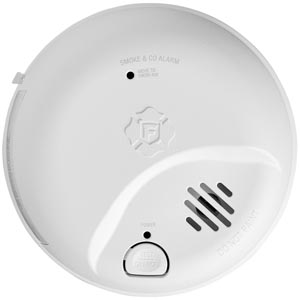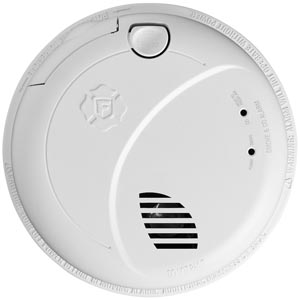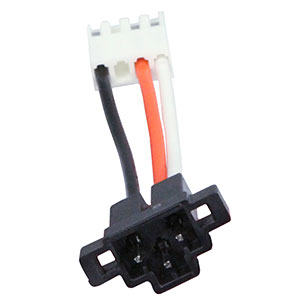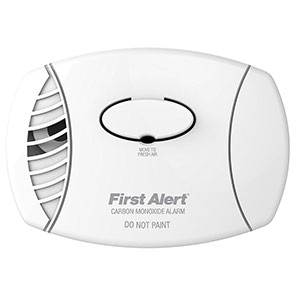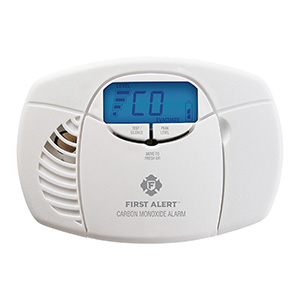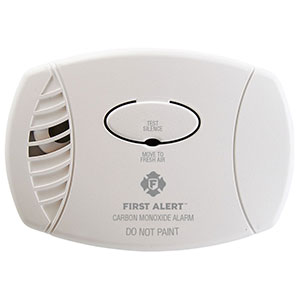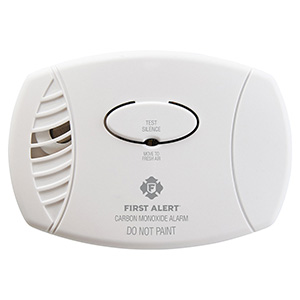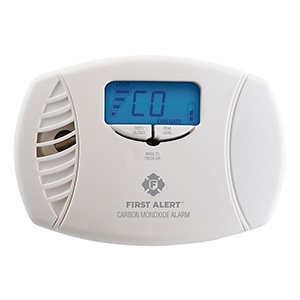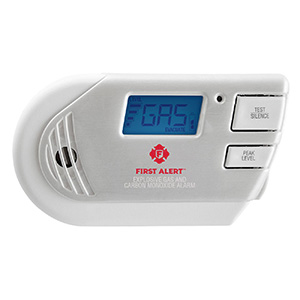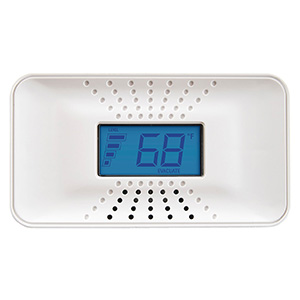First Alert Hardwired Carbon Monoxide Alarm with Battery Backup - CO5120BN
- Electrochemical Carbon Monoxide Sensor - the most accurate sensor available as compared to other sensing technologies.
- AC power indicator with a 9V Alkaline Battery Backup.
- Latching alarm indicator - remembers which unit initiated an alarm.
- Two silence features - can silence the low-battery chirp for up to eight hours or temporarily silence an unwanted nuisance alarm.
- End of Life Signal provides audible notification alarms needs to be replaced.
Hardwired Carbon Monoxide Alarm with Battery Backup
This First Alert Hardwired Carbon Monoxide Alarm includes a battery backup that is perfect for meeting codes wherever CO detectors are required for new construction. The hardwired detector features a quick plug-in power connector that makes the installation process a near effortless one as it will connect right into your building’s wiring. Additional features such as a microprocessor that limits nuisance alarms and a single test/silence button add versatility to an already efficient carbon monoxide alarm.
Electrochemical Sensor Monitors CO Levels
The alarm features an advanced electrochemical sensor that detects carbon monoxide leaks from a variety of sources, such as faulty fuel-burning appliances, blocked chimneys, and cars left running in the garage. Carbon monoxide can't be seen, smelled, or tasted in the air, and it is the leading cause of accidental poisoning deaths in America. By placing carbon monoxide detectors on every floor of the home and in each sleeping room, you can help protect your family from the danger of carbon monoxide.
Battery Backup for Detection During a Power Outage
This carbon monoxide alarm is designed for hardwired installation, but it also features a battery backup that helps ensure continued functionality in the event of a power outage. The unit comes with a 9-volt battery and features a pivoting, easy-to-access battery drawer that allows you to replace the battery without dismounting the alarm.
Works in Tandem with Other First Alert Alarms
In addition to functioning independently, this carbon monoxide detector can also integrate with up to 12 other First Alert or BRK hardwired alarms for coverage of larger spaces. It also integrates with up to six other compatible devices, such as bells, horns, and repeaters. If one alarm in the series is triggered, they will all sound. The alarm features a latching indicator to identify which unit triggered the alarm, alerting you to the area of danger.
First Alert Hardwired Carbon Monoxide Alarm CO5120BN
How to Install First Alert CO5120BN Hardwired Carbon Monoxide Alarms:
In this guide, we'll be showing you how to install First Alert Hardwired Smoke and Carbon Monoxide Alarms. Here are a few items you'll need before starting the installation process: Needle-nose pliers or utility knife, screwdriver, wire stripper, wire nuts and a ladder.
Hardwired Smoke or Carbon Monoxide Alarm Requirements:
- 120V household electrical circuit (unswitched 120VAC)
- Standard wiring junction box to a 4 in. (10 cm) size, on either the ceiling or wall
- Selecting an appropriate location to install your smoke and carbon monoxide alarms (see below guidelines for additional information):
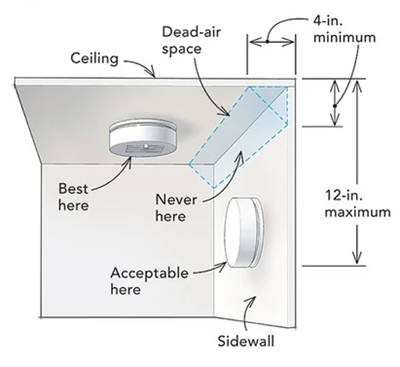
- When installing an alarm on the wall, the top edge of an alarm should be placed between 4 in. (100 mm) and 12 in. (300 mm) from the wall/ceiling line.
- When installing an alarm on the ceiling, place the alarm as close to the center as possible.
- In either case, install the alarm at least 4 in. (100 mm) from where the wall and ceiling meet.
- First Alert Smoke Alarm FAQs
- First Alert Carbon Monoxide Alarm FAQs
Connecting First Alert Hardwired Alarms to 120V Wiring
To begin, turn off power at the junction box and connect your alarm to the building's electrical wiring.
- Locate the junction box and turn off power
- Remove the power connector from the new alarm's packaging
- Using wire nuts, attach the hot (black), neutral (white), and interconnect (orange) wires

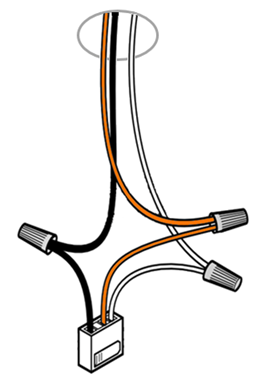
| Black wire (hot) |
Attach to black wire on power connector |
| White wire (neutral) |
Attach to white wire on power connector |
| Orange wire (interconnect) |
Standalone (single-station) alarm: This wire is not needed; tuck the orange wire into the junction box. Interconnected alarms:
|
Mounting First Alert Hardwired Alarms
- Secure the mounting bracket to the ceiling or wall using screws (included in the package)
- Insert the power connector into the plug on the back of your alarm
- Tuck any hanging wires into the junction box
- Position the base of the alarm onto the bracket and turn it clockwise until it's secured
- Remove the pull-tab to activate the backup battery

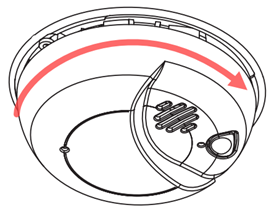
Installing Additional and/or Interconnecting First Alert Hardwired Alarms
If you are installing more smoke or carbon monoxide alarms, you'll want to repeat the process throughout the building. Interconnected smoke and co alarms must meet all requirements:
-
The same fuse or circuit breaker must power all interconnected alarms.
-
Up to 18 compatible detectors can interconnect, with a limit of 12 smoke alarms.
-
The total length of wire interconnecting the alarms should be less than 1,000 ft. (300 meters). This type of wire is commonly available at hardware and electrical supply stores.
-
All wiring must conform to all local electrical codes and NFPA 70 (NEC). Refer to NFPA 72, NFPA 101, and your local building code for more information.
-
Interconnect wiring diagram:
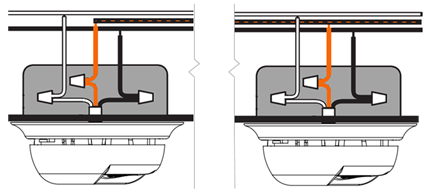
If you have any doubts or reservations about these interconnect requirements, please contact an experienced electrician to install your wiring and hardwired alarms.
Restoring Power and Testing Hardwired Alarms
Once you've installed your hardwired alarms, you'll want to restore power to the junction box. Under regular operation, the power indicator light on the alarm will shine/blink to indicate that it is receiving AC power.
Here's how you can test standalone or interconnected alarms:
-
Standalone Alarms: Press and hold the Test/Silence button until the unit triggers an alarm.
-
Interconnected Alarms: Press and hold the Test/Silence button until the first unit triggers an alarm. All interconnected detectors should sound off. Repeat this process to test each alarm in the interconnected series.
Here are a few situations that may cause a carbon monoxide alarm "false alarm:"
- The carbon monoxide alarm needs to be relocated. Carbon monoxide alarms should be located 15-20 feet away from all fossil fuel burning sources like furnaces and stoves. Alarms should be located 10 feet away from sources of humidity like showers.
- Fossil fuel burning appliances may not be burning fuel completely. Check pilot lights/flames for blue color. Appearance of yellow or orange flames indicates incomplete combustion-a source of carbon monoxide.
- Power Source: Hardwired
- Battery Backup: 9V
- Sensor: Electrochemical
- Interconnect: Can be linked with other compatible BRK and First Alert hardwired smoke and carbon monoxide detectors
- Intelligent Sensing Technology: Helps reduce nuisance alarms
- Noise Output: 85 dB in a T3 Pattern
- Single Button: One press to silence and test alarm
- Easy Installation: Include a large opening in the mounting bracket for easy access to wiring
- Dust Cover: Keeps alarm clean during construction
- Standard: Conforms to UL 2034 Standard
- Warranty: 5 Year Limited
- Product Dimensions (LxWxH): 5.4 x 1.9 x 5.4 in.
- Product Weight: .4 lbs.
If you are interested in ordering a large quantity of items you may qualify for volume pricing discounts. Volume Discount Pricing is a great way for customers to save big on large, bulk orders of most items available in our store. Please send a bulk order request to our friendly sales staff so they may create a quote and provide personal service for your order! You will receive a response within 1-2 business days and our office hours are Monday through Friday, 8am-5pm CST.
- Let us know what products & the quantities you are interested in.
- Get a detailed quote from a dedicated sales rep.
- Our warehouse ships directly to you.
- You enjoy the savings & are now a preferred customer.
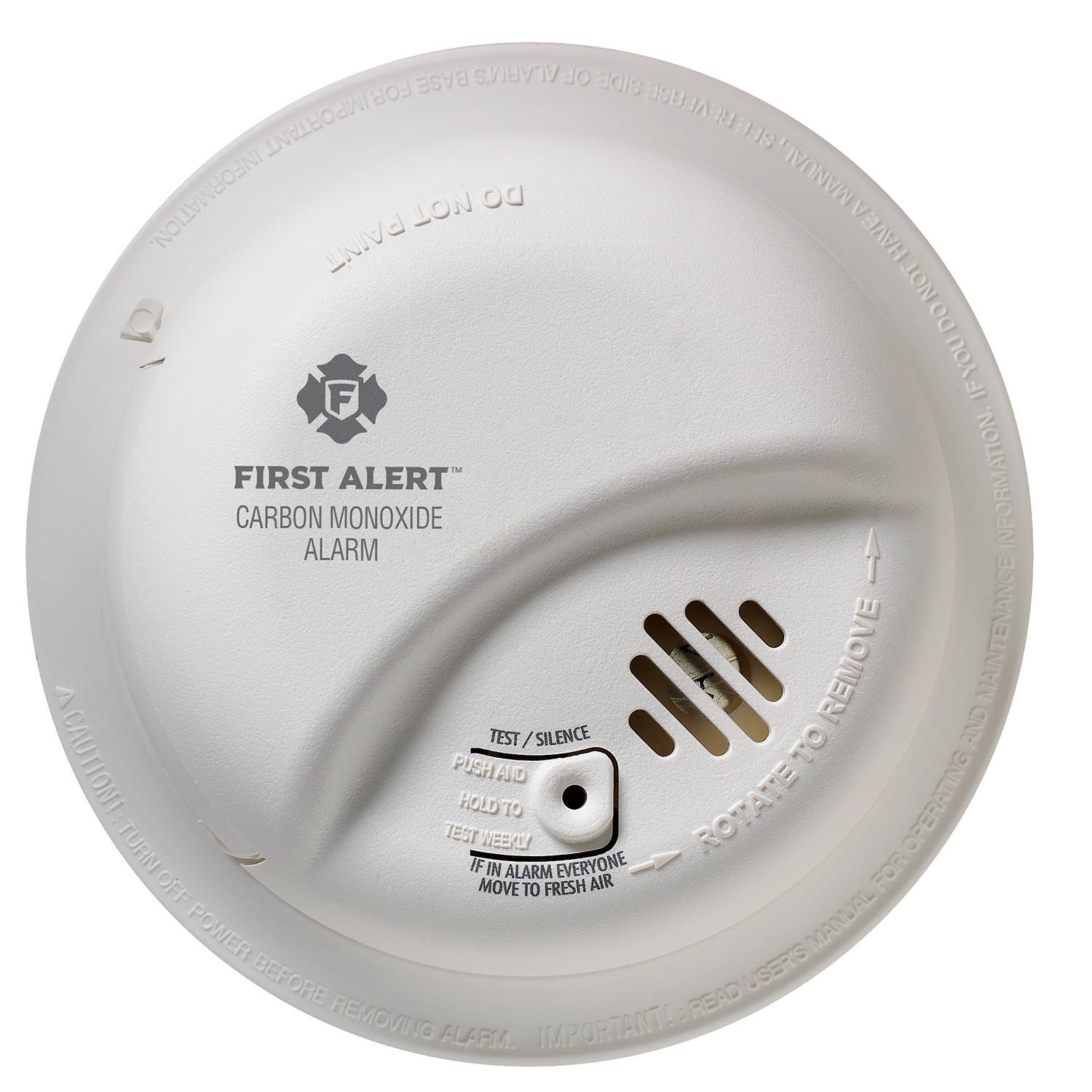
First Alert Hardwired Carbon Monoxide Alarm with Battery Backup Reviews
EXCELLENT SERVICE AND PRICING
Very fast shipping! Arrived safely.
Quick shipping
The process of purchasing the new CO Alarm was fine. I did though like the old model CO5120PDBN, with the digital display better than looking up what the beep sequence is indicating.
Works good
Quick ship plugged in to existing wiring .
My old detector quit working and this one fit perfectly. Easy install.
Very good
Very good
Alarm does not stay affixed to base - purchased 2 units and had to use double side adhesive tape to secure the units to their base.

